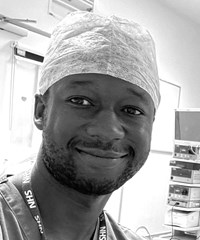ENT features
Fifth Sense James Lind Alliance Priority Setting Partnership for smell and taste disorders
Research priorities in the past have been dominated by the quixotic curiosity of individual academics and the capricious generosity of funding organisations. There must be a better way... At Fifth Sense, research is fundamental to the work we do. Above...
In conversation with Professor Valentina Parma, Head of GCCR
Smell has long been regarded as the Cinderella of the senses, oft neglected by clinicians, the research community and lay public. The Global Consortium for Chemosensory Research looks to change all that. Our roving reporter, Abigail Walker, talks to its...
Sushruta and Indian rhinoplasty
Vijay Pothula explains rhinoplasty’s roots in ancient Indian Ayurvedic medicine, and how it was introduced to the Western world. In 1794 The Gentleman’s Magazine published a surgical operation which was long established in India but unknown in Europe [1]. A...
The ENT operating theatre viewed down the retrospectoscope
We learn much of our future by looking at our past; Douglas MacMillan provides us with a fascinating glimpse into his years as a junior doctor. The operating theatre was a somewhat alien environment in the late 1960s: theatre sisters...
The future role of technology in rhinology
Technology is moving our speciality forward very rapidly in all domains, but none more so than in rhinology. David Whitehead looks at current and future trends. How will a surgeon justify their position in a team where artificial intelligence (AI)...
Innovation in medical product technologies
There is a point in all innovation projects where the clinician has exhausted their knowledge and needs expert help to create a prototype. Mark Prince, Design Engineer, discusses this phase of the project and how engineers’ analytical thinking brings a...
How good ideas become great products: in conversation with three medical innovators
Ever had a great idea for an innovation that would significantly improve your practice, but wondered how to go about developing it? Lucy Dalton interviewed three consultant ENT surgeons-come-successful innovators (one international, one novice and one experienced) who explain what...
History of innovation in ENT
Innovation seems to have been in the strapline of every meeting, conference and course for the last few years. You would be forgiven for thinking it is a new a concept, but as Neil Weir beautifully details, innovation has been...
Non-surgical rhinoplasty
Some patients would like to alter the appearance of their nose without surgery or make further subtle changes after a rhinoplasty. Lydia Badia explains how this can be done, thanks to the advent of injectable fillers. This medical procedure in...
Preservation rhinoplasty
Hump reduction and osteotomies to close the open roof, or lowering the whole nasal dorsum? Charles East explains how preservation techniques can improve outcomes by maintaining the integral structures of the nose. What is preservation rhinoplasty? The origins of reduction...
Rhinoplasty for cleft nose deformity
Modern cleft lip and palate repairs produce excellent functional and aesthetic results at an early age. Tony Holmes, a craniofacial surgeon with over 40 years’ experience, shares his wisdom on the best timing and techniques for addressing the associated complex...
The tip in rhinoplasty
Getting the tip right (both its position and its shape) is vital in rhinoplasty. George Marcells eloquently gives us his perspective on how to get it right. “Many surgeons overly concentrate on the profile at the expense of the frontal...




















